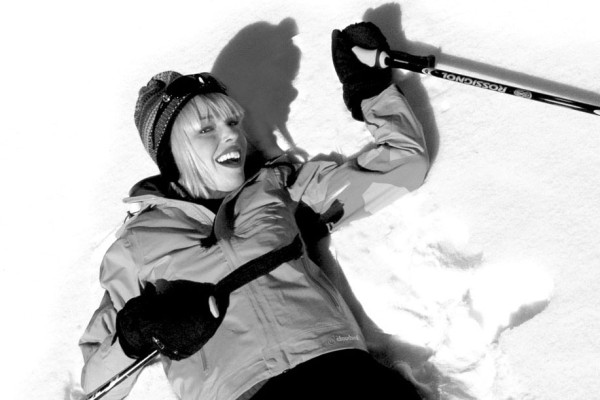Continued (page 4 of 5)
We boarded on an afternoon when the winds were coming out of the north, which meant we felt every pocket of turbulence we encountered (for a smooth ride fly when winds are out of the south). While you are sitting low in the plane’s cockpit behind a windshield, as soon as you turn your head left or right to get a better view the wind takes your breath away. When the plane banks sharply – the best way to take in the sights – it’s reminiscent of riding a bike along a curvy mountain road. Honestly, I’d rather be on a Harley but the flight was thrilling and I got a new perspective of Sedona, particularly the seven canyons area and Cathedral Rock. The biplanes accommodate two passengers – you sit in the front cockpit while the pilot is in the back. Riders receive fun leather skullcaps with built-in headphones so you can hear the pilot at all times. The plane flies at about 6,500 feet in altitude and, as Eric says, it’s not a “vomit comet.”
I did feel a little dizzy and woozy from the biplane experience – as I did after watching hang gliders Hal Hayden and Kris Thomsen run down and off a very short, snow-covered concrete launch ramp at the top of 7,800-ft. Mingus Mountain before the wind picked up their gliders, with wingspans ranging from 32 to 34 ft., and gracefully lifted them above 9,000 ft. Soaring above us they sounded like giant ravens while their shadows played across the pine trees – it was actually quite beautiful. Fortunately, neither Hal nor Kris, members of the Arizona Hang Glider Association (www.ahga.org), own tandem gliders so I was able to save face and not turn down the offer of a flight. I’m adventurous but I drew the line when I saw the nearly vertical 4,500-foot drop to the city of Cottonwood down below.
Hal, the site coordinator for the Mingus Mountain launch site, says Mingus is one of the oldest recognized flying sites in the country – its first gliders were two guys from Phoenix, who began using it 32 years ago. The concrete ramp was built in 1995 and, on weekends from April through October, up to 25 gliders from all over the world converge on the spot, which has its own campground for pilots. During the warmer months Hal says it’s common for gliders to soar up to 17,000 feet in altitude; that’s why many carry oxygen tanks. Popular landing spots include the Cottonwood Airport and a field near Dead Horse Ranch State Park.
Gliders are made from Dacron and Mylar – similar to sails for racing sailboats – stretched across aluminum frames and cost from $2,000 to $7,000. Besides Mingus, area hang gliders also launch from Apache Maid northeast of Sedona, Yarnell south of Prescott, and Mt. Elden in Flagstaff.
So what does it feel like to fly above the red rocks, held vertical in a harness resembling a sleeping bag with only a crossbar to hold on to? “It’s my favorite way to fly,” says Hal. “It’s the way people fly in their dreams.”
Apparently jumping out of an airplane and free-falling at 120 mph isn’t like flying in a dream, or so says Karl Priggee, co-owner of Red Rock Skydiving, based at Cottonwood Airport. “It’s not describable,” says Karl. “It’s the biggest rush you’ll ever get. It’s not like a roller coaster or any ride – it can’t be duplicated. It’s like floating on a cushion of air.”
Karl bought the outfit (it had operated as Skydive Sedona at Cottonwood for six years) with his wife, Sharon, last July after quitting his job at a power plant in Indiana. Karl has logged over 3,400 jumps, 1,800 of which have been tandems, since 1978. “I’d just gotten my pilot’s license and wanted to try everything aviation-related,” he recalls. “I liked it so much I had my second jump the same day as my first.”



